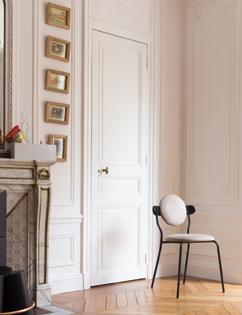
3 minute read
Products
Gentle gestures
A round-up of the latest objects, lighting pieces and accessories we love - from Aljoud Lootah's crystal diffusers to Sabine Marcelis”s mirror decorated by a swirl of pastel pink paint
Photography by Elias Hassos.


Plissée floor lamp Sebastian Herkner for ClassiCon Available at superstudio.me
3
7 1
2

6 5 4

1. Fan Mirror by Ghidini 1961. Available at modaoperandi.com 2. Glaze Splash mirror by Sabine Marcelis. Available at matchesfashion.com 3. Le Sirenuse, Positano and Luke Edward Hall bone china charger plate. Available at matchesfashion.com 4. Medkheneh Crystal Diffuser by Aljoud Lootah. 5. Planet chair by Jean-Baptiste Souletie for La Chance. Available at superstudio.me 6. Abstract grey cushion by Tom Dixon. Available at modaoperandi.com 7. Red Blossom stoneware mug by Bernadette. Available at matchesfashion.com
Gazing into the future
Reflections on interior design by Vanessa Northway
As the world continues to come to terms with spending most of its time indoors, interior design has gained more prominence than ever before. Although restrictions are gradually lifting, concerns stemming from a pandemic-driven 2020 could well last into the foreseeable future.
Homes were places of refuge and sanctuary; offices were places of productivity and creativity. However, 2020 has changed the way we look at our interiors, with people working from home rather than their workplaces for extended periods of time. Therefore, there are many lessons that we can learn and implement while designing spaces for homes and offices. The focus has shifted towards wellness, sustainability and the use of technology, all of which may not have been a priority when creating spaces a few years ago.
Today, wellness and sustainability are two critical pillars to focus on while designing spaces. Wellness refers to a balanced living area that addresses air and water quality, lighting, comfort and clutterfree space while also bringing out the best in you, emotionally and productively. Sustainability ensures the use of products and materials that are suitable for your living space and do not adversely affect the outside environment. Wellness and sustainability can be achieved by using the right amount of lighting for your room, decluttering, using air-purifiers or dehumidifiers, incorporating indoor plants, using products made from recycled or reclaimed materials, and using nontoxic and non-polluting products that are organic and not treated with pesticides. Organic cotton, bamboo, jute, cork and felt are some environmentally conscious alternatives to traditional materials. Bamboo, for example, is 100 per cent biodegradable, antibacterial and eco-friendly, if not chemically processed. User well-being and sustainability should not only be restricted to gyms, gardens or yoga centres, but also incorporated while designing homes and offices. Keeping customers' well-being at the heart of each design project should be at every interior designer's core.
The next key element will be the incorporation of innovative digital solutions in homes and office spaces. Technologically empowered fixtures such as intelligent lighting, low-flow taps, smart fridges or even solar-powered lights and doorbells can significantly contribute towards energy, water and monetary savings. In fact, LED light fixtures use at least 25 per cent less energy and last longer than traditional bulbs.
Finally, interior design professionals will need to be futuristic in their design approach to keep pace with global technological advancements. Virtual reality and 3D printing have already been introduced in architecture, and these technologies are here to stay. Understanding the fundamental requirements of working with technology to support industry demands is the need of the hour, to safeguard the future of interior designing.
At Heriot-Watt University, our interior design courses focus on equipping students with proper knowledge while also addressing current design and technology trends. By helping future interior design professionals concentrate on sustainable and technologicallydriven solutions through our courses, we hope to continue contributing positively to the industry in the UAE and the region.
Vanessa Northway is the Associate Head of School, Associate Professor, School of Textiles & Design, and Senior Teaching Fellow at Heriot-Watt University Dubai.









